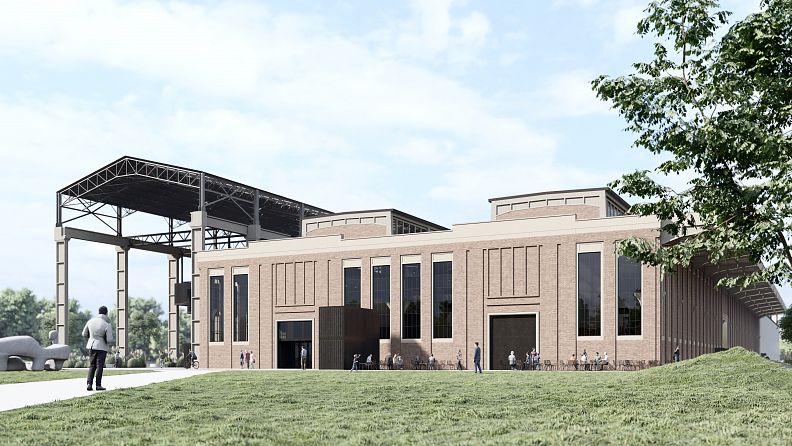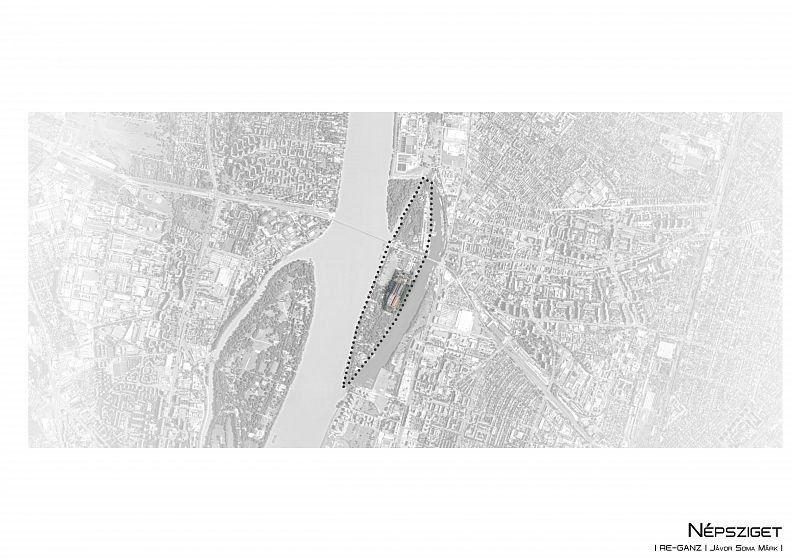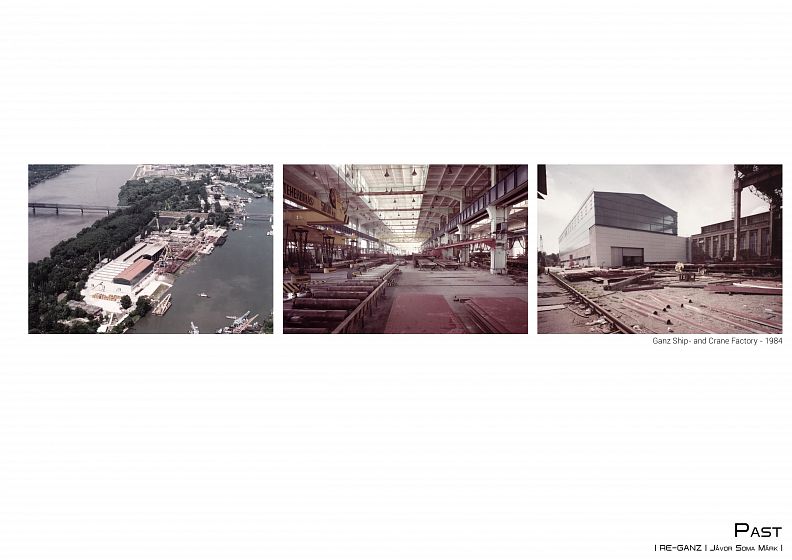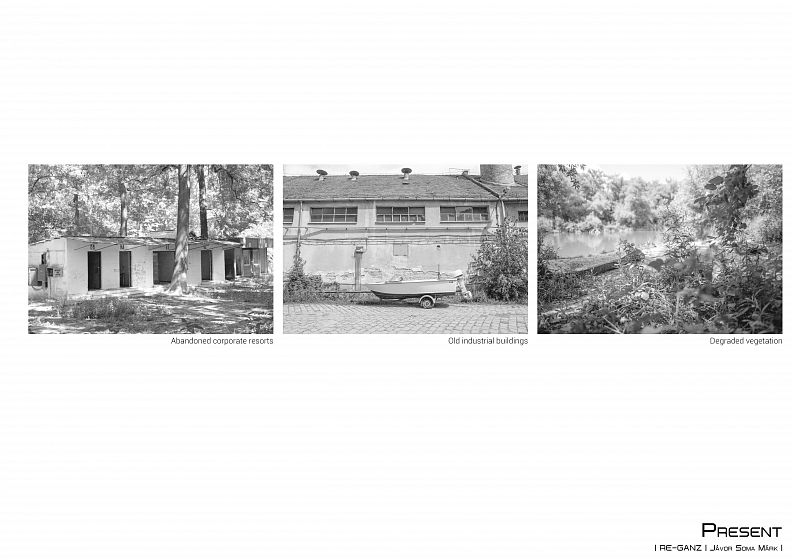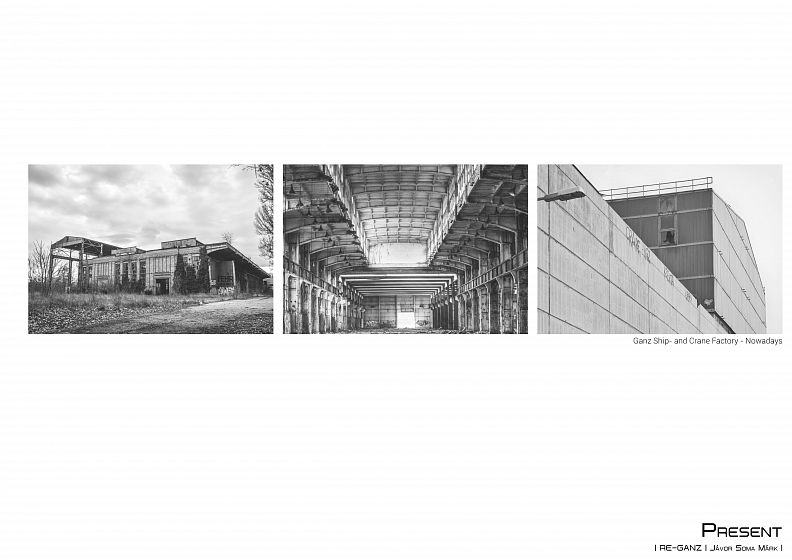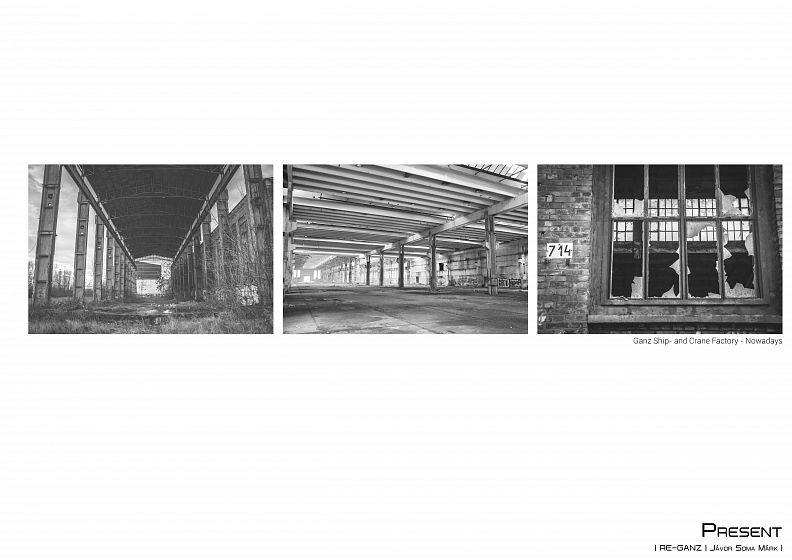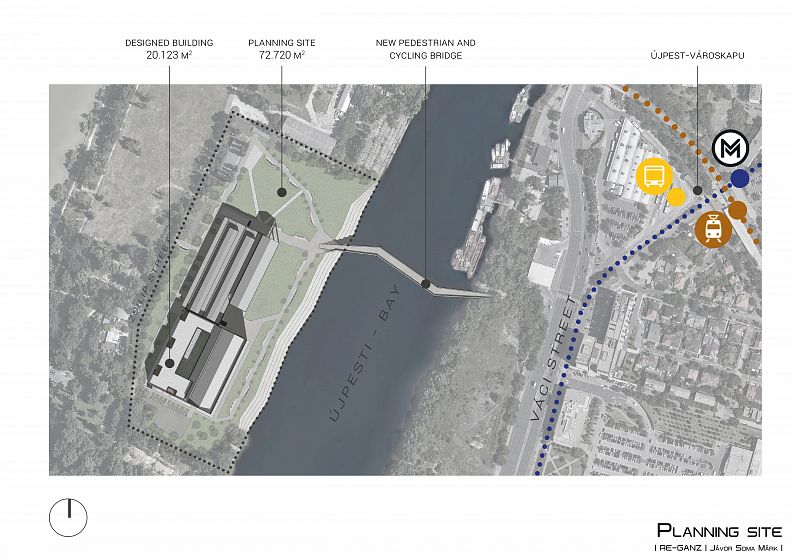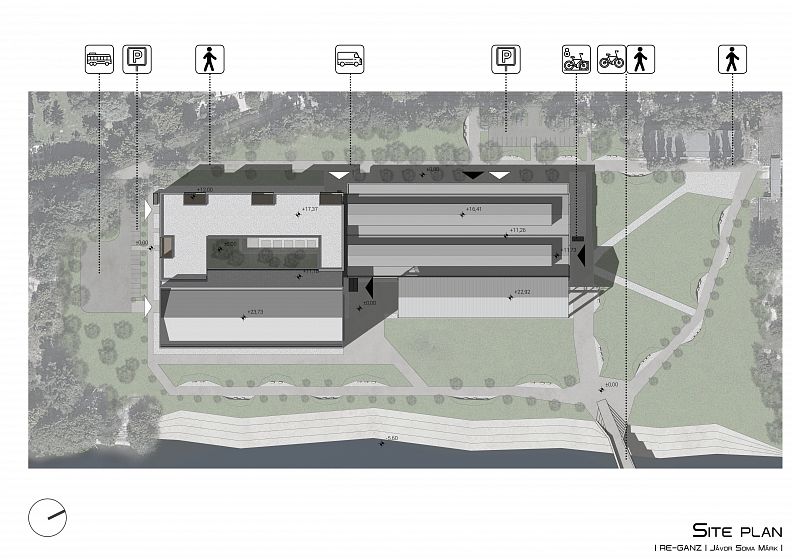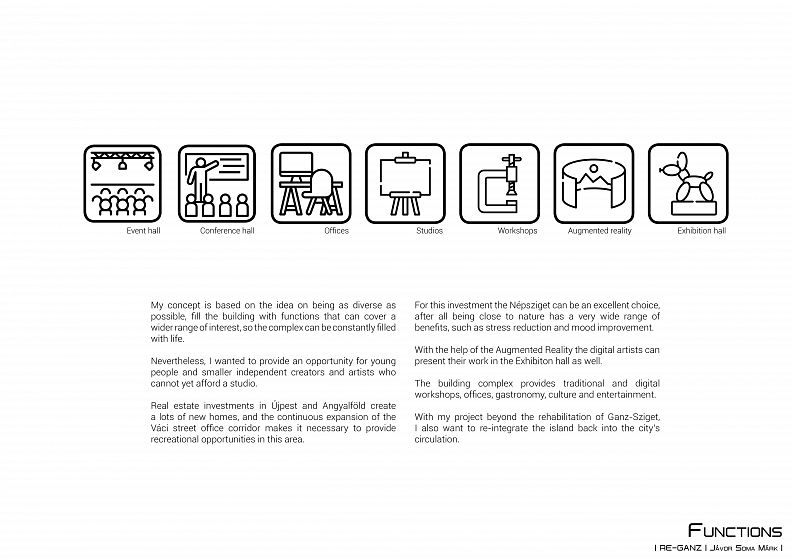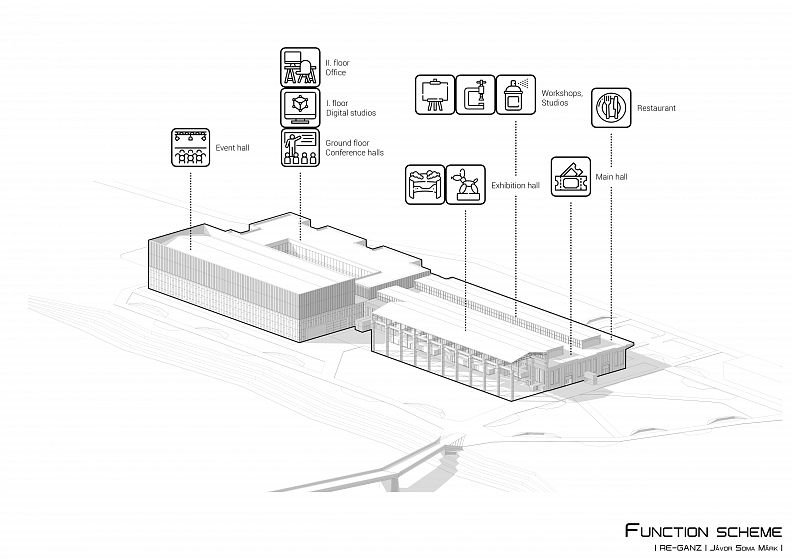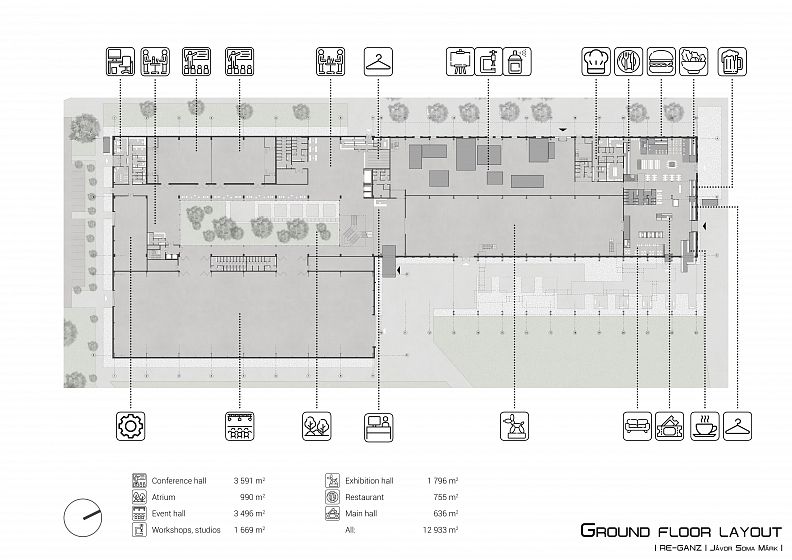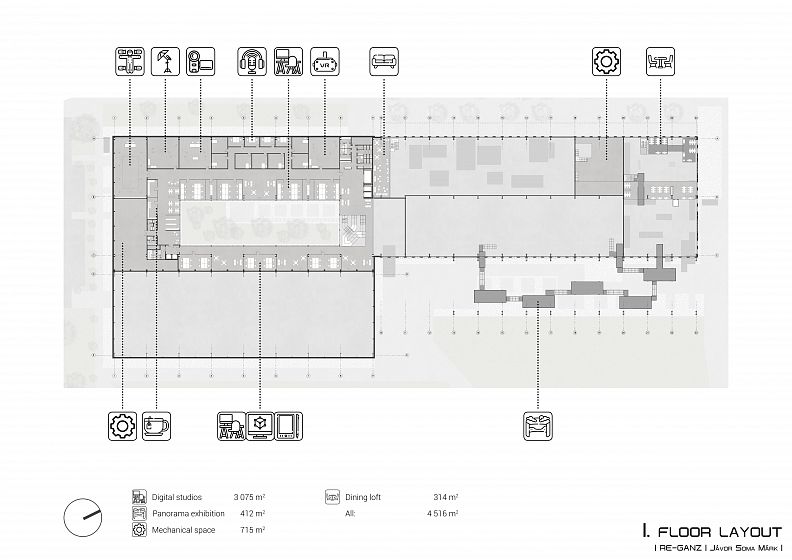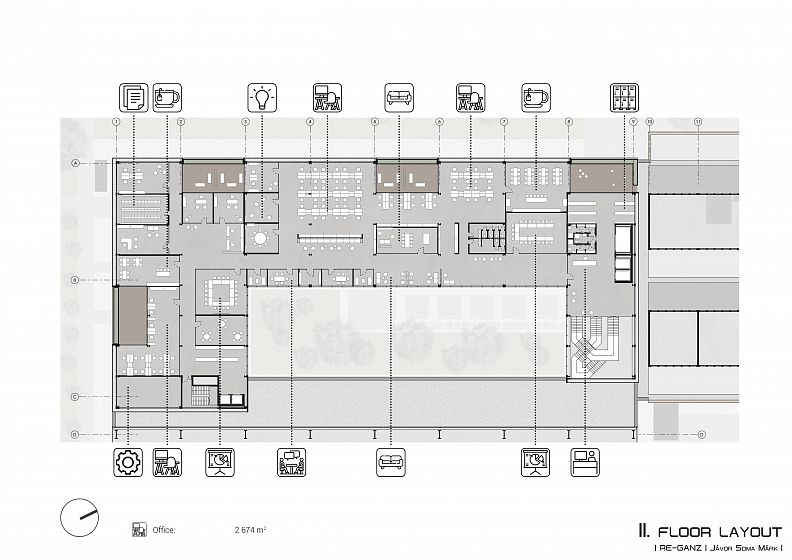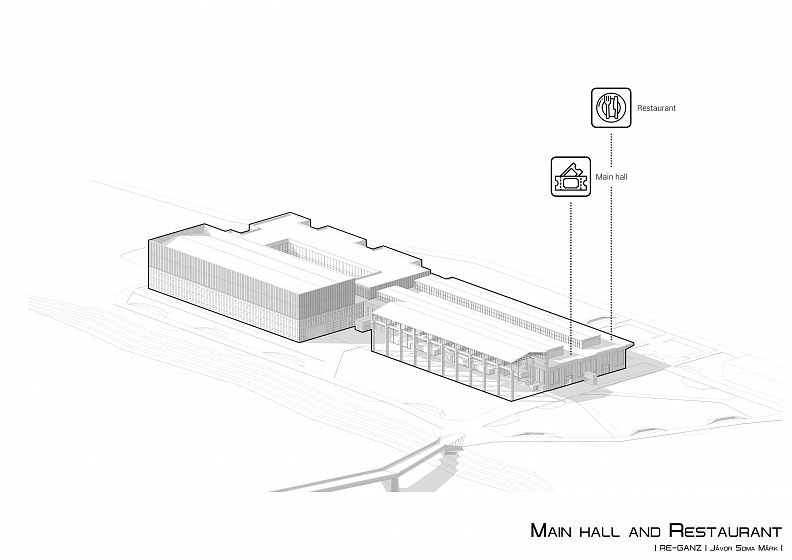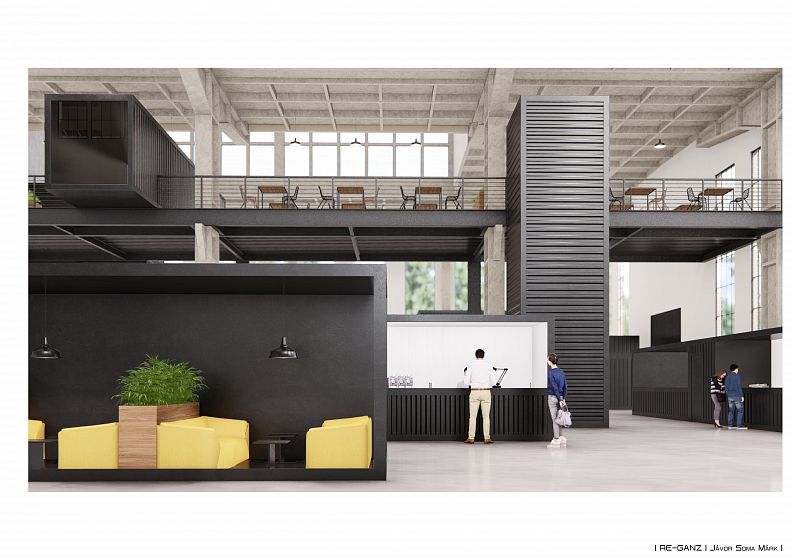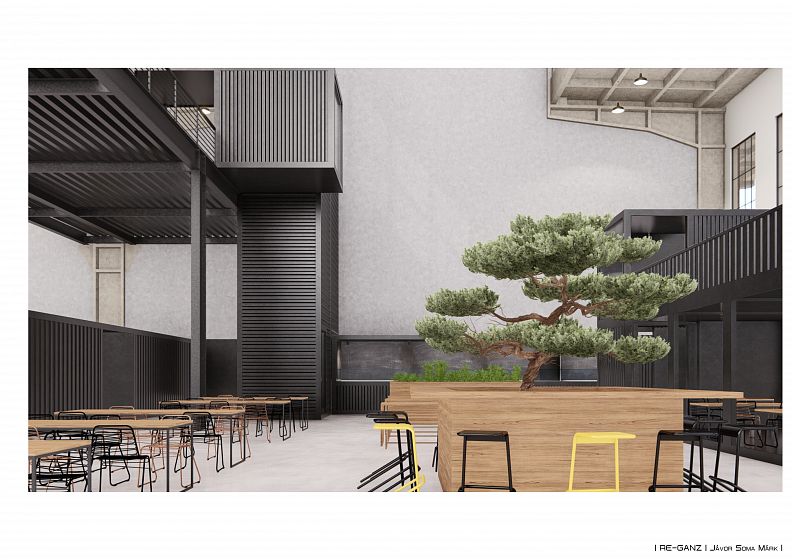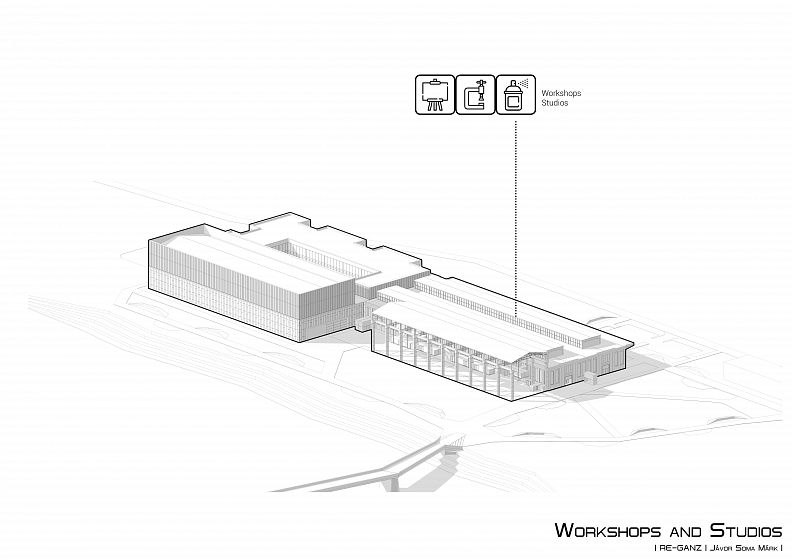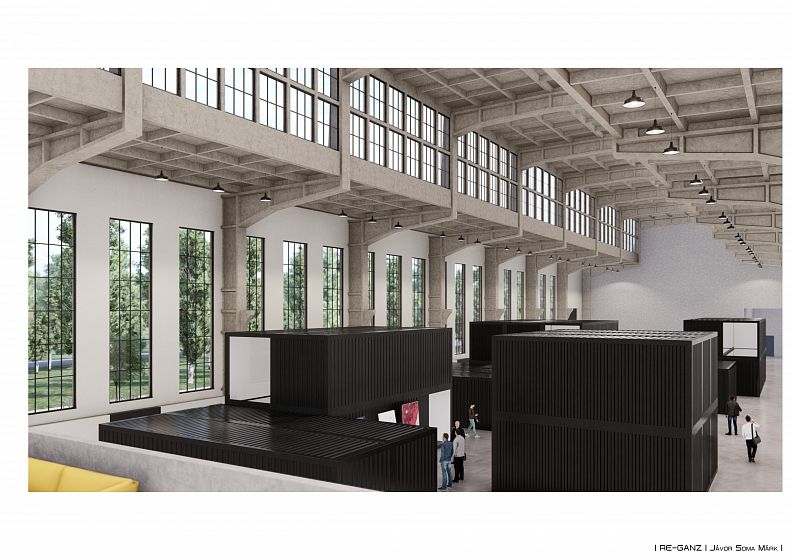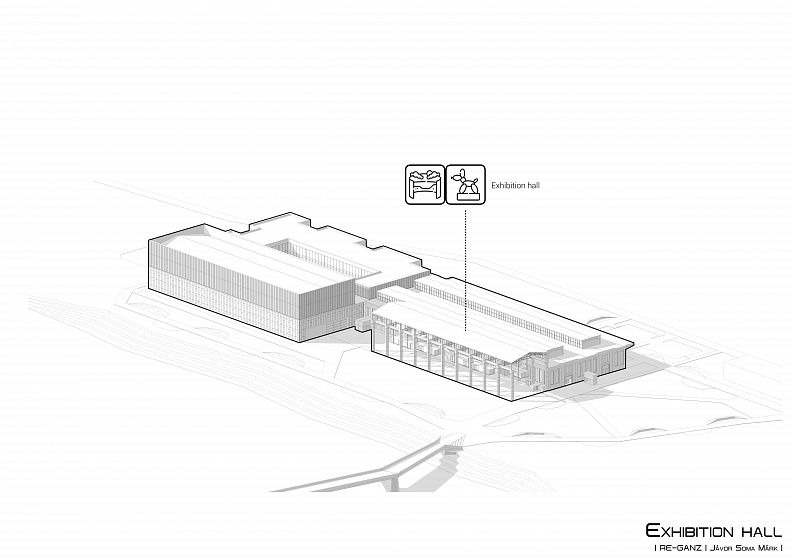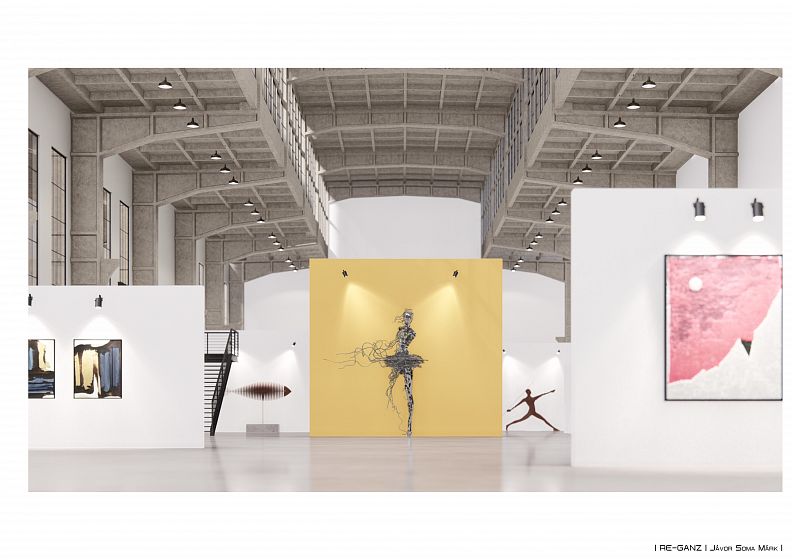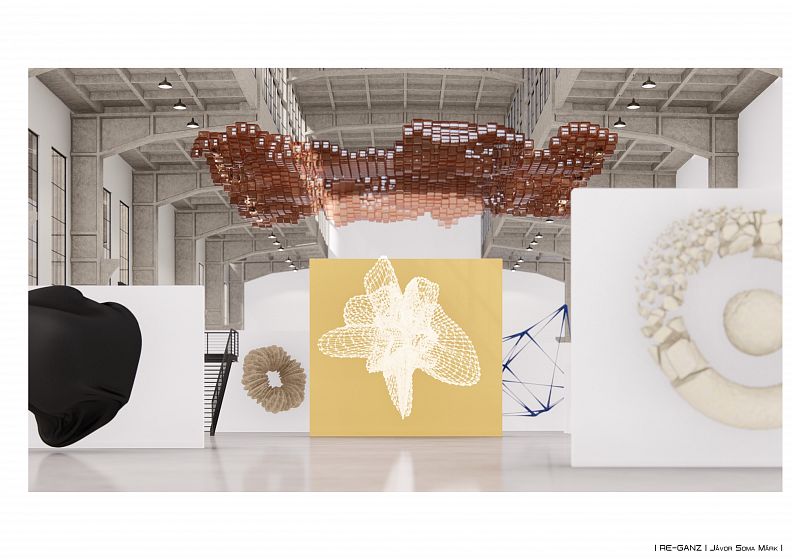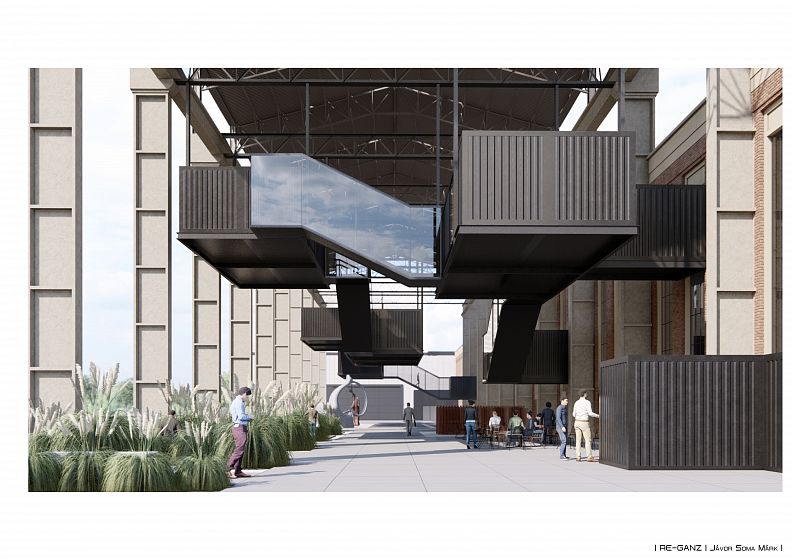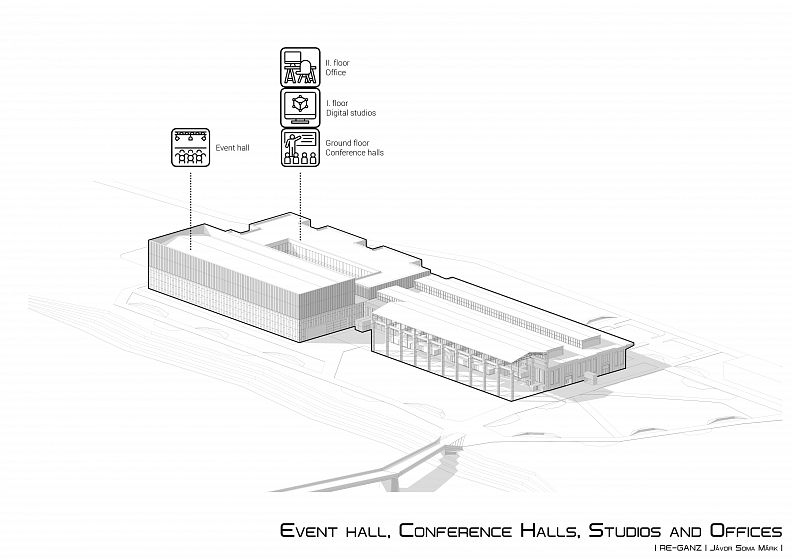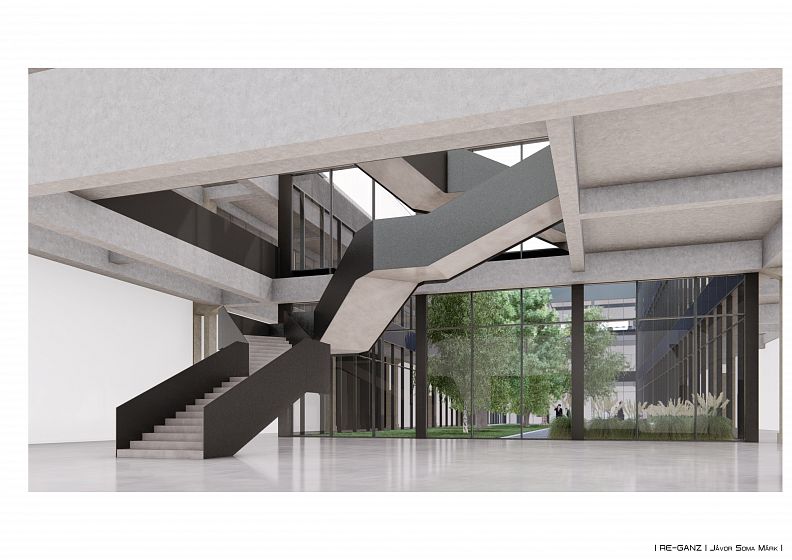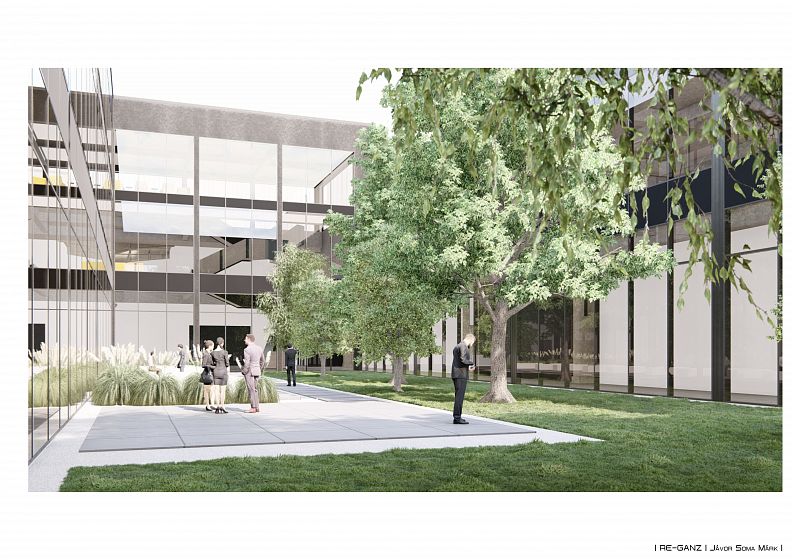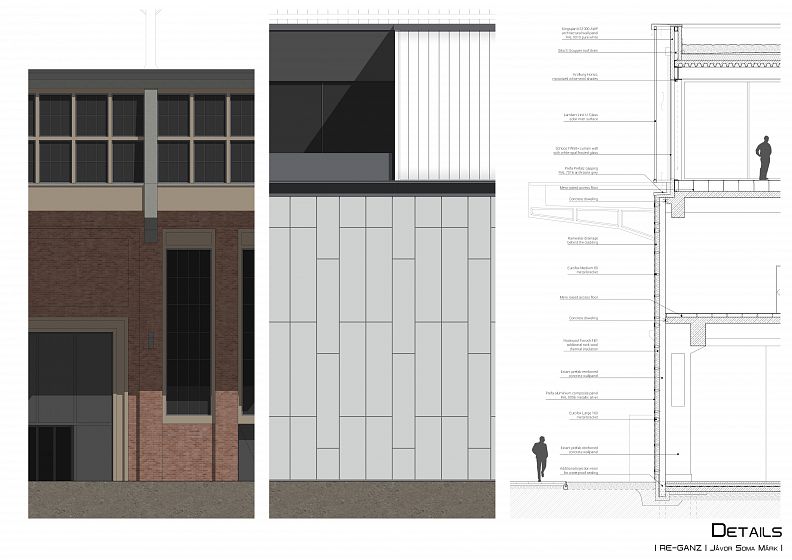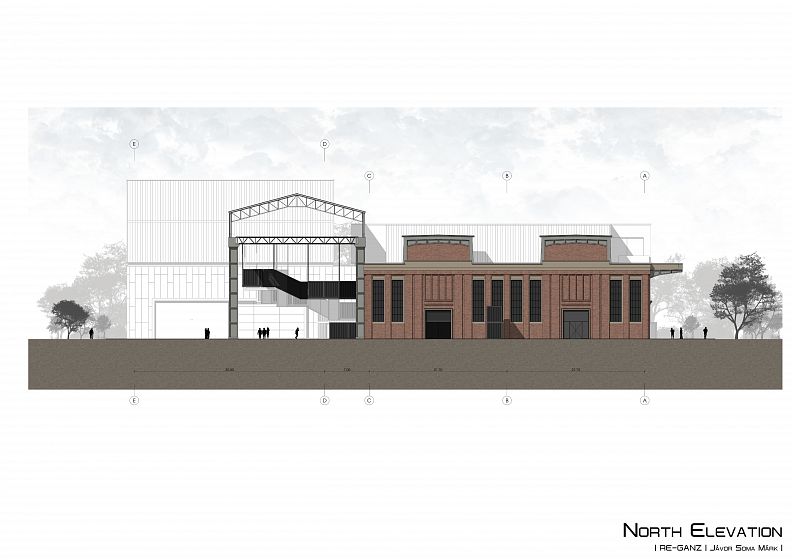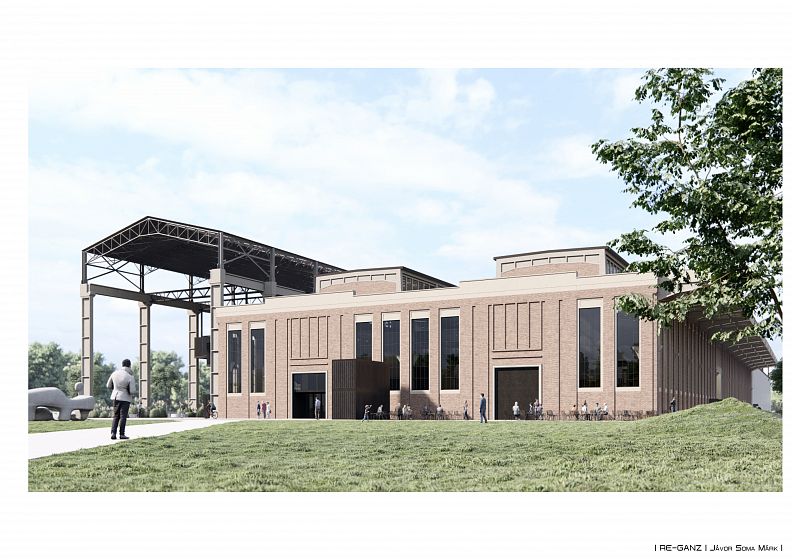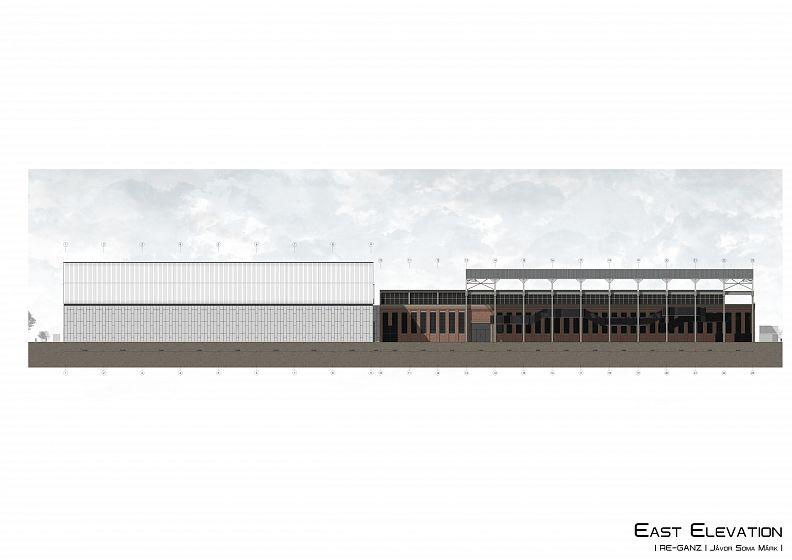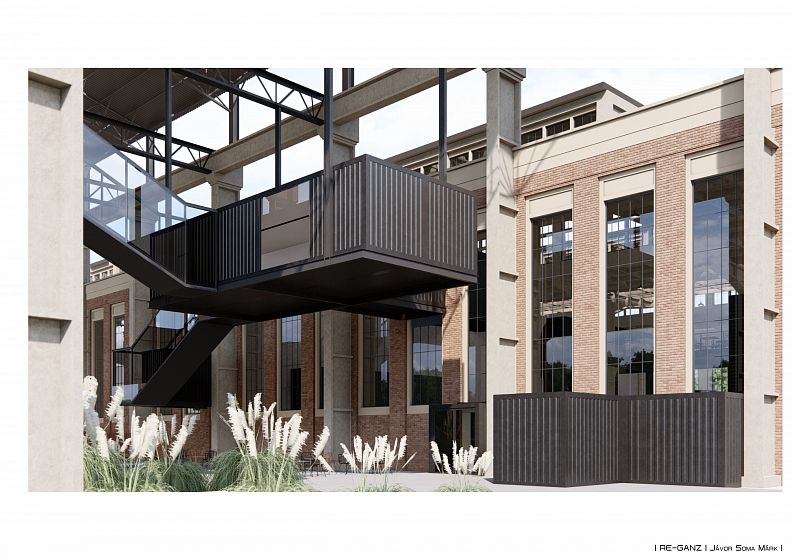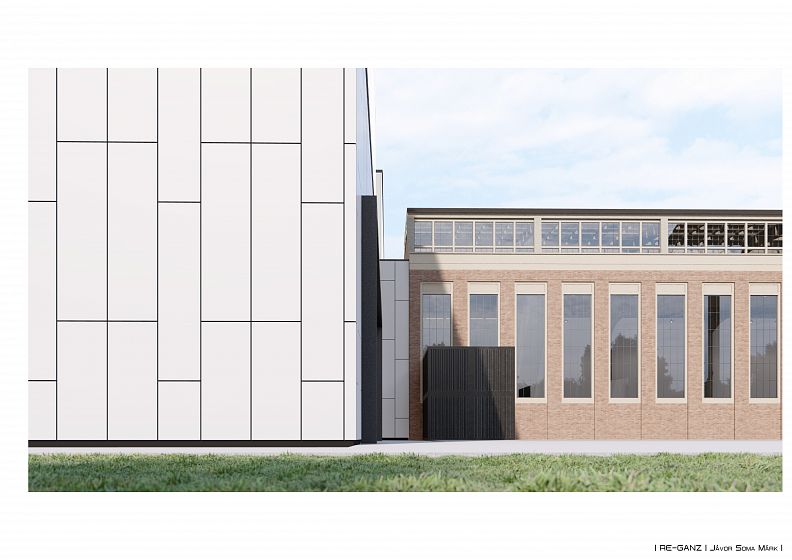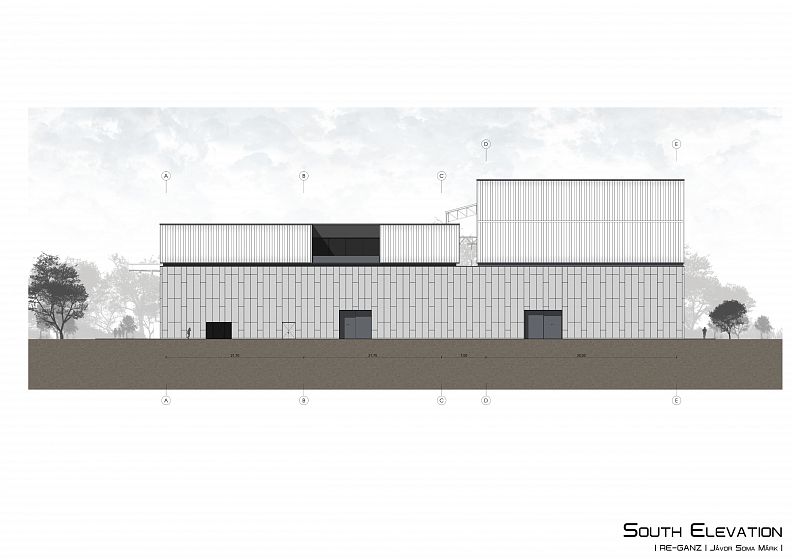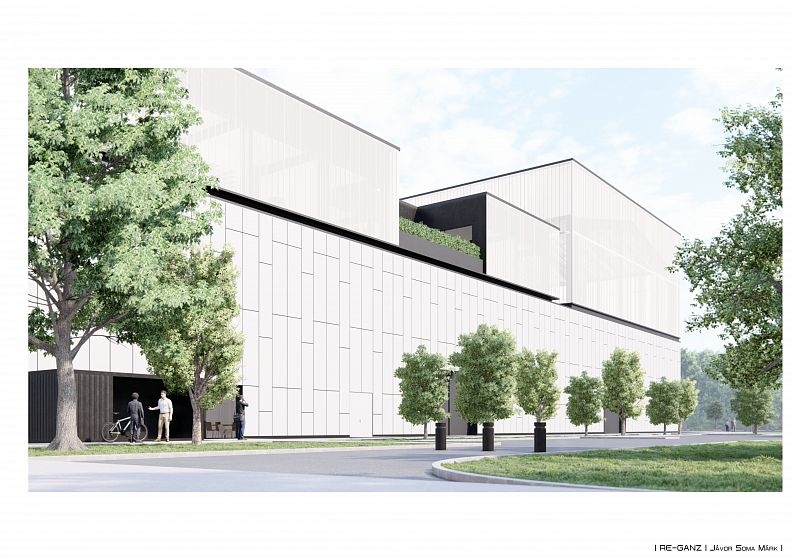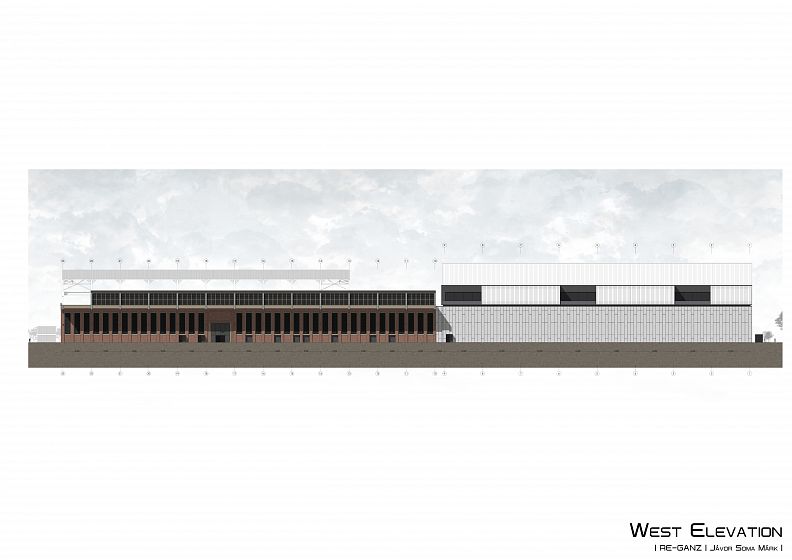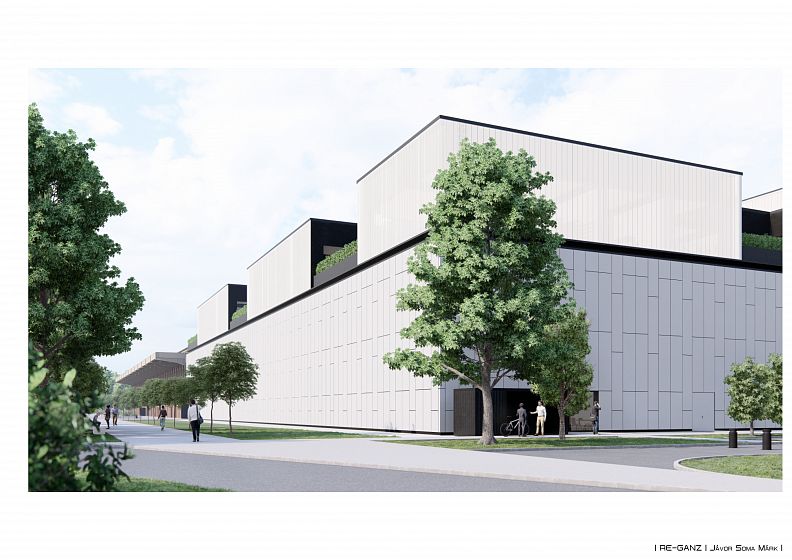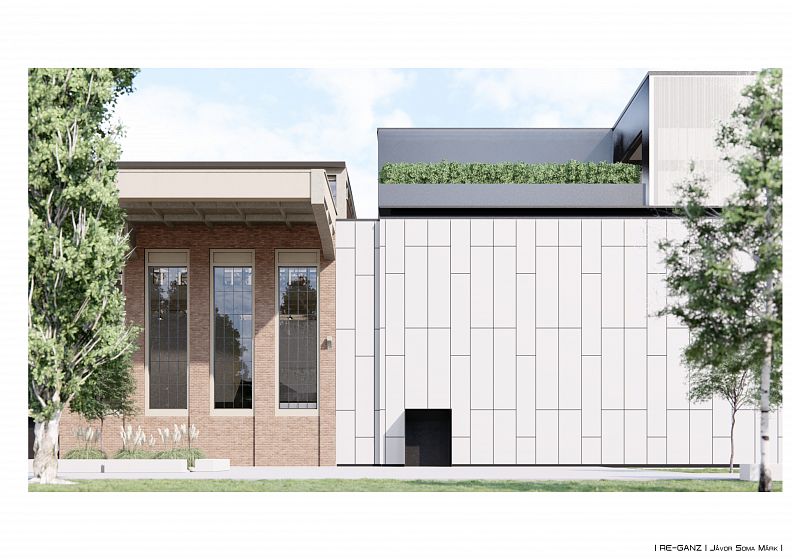RE-GANZ

Idea projektu
Nowadays, sustainability and eco-conscious thinking are gathering more and more ground. In addition to everyday life, special emphasis must be placed on this in terms of our built environment. During the change of regime, we were left with a lot of vacant industrial buildings, which have outstanding architectural value, but are abandoned. Instead of rethinking them, more and more, larger-than-larger greenfield investments are being made, thus increasing our ecological footprint. That’s why I chose the rehabilitation of the Ganz Ship- and Crane Factory building on Népsziget as my architectural master degree thesis.
Popis projektu
My concept is based on the idea on being as diverse as
possible, fill the building with functions that can cover a
wider range of interest, so the complex can be constantly filled
with life.
Nevertheless, I wanted to provide an opportunity for young people and smaller independent creators and artists who cannot yet afford a studio.
Real estate investments in Újpest and Angyalföld create a lots of new homes, and the continuous expansion of the Váci street office corridor makes it necessary to provide recreational opportunities in this area.
For this investment the Népsziget can be an excellent choice, after all being close to nature has a very wide range of benefits, such as stress reduction and mood improvement.
With the help of the Augmented Reality the digital artists can present their work in the Exhibiton hall as well.
The building complex provides traditional and digital workshops, offices, gastronomy, culture and entertainment.
With my project beyond the rehabilitation of Ganz-Sziget, I also want to re-integrate the island back into the city’s circulation.
Technické informace
With the building expansion in 1984, a strong contrast developed between the two parts of the building. I formed the new functions, places and structures by strengthening this contrast further.
In the case of the brick building (built in 1940s), I tried to reduce the permanent spaces to make the operation of the building more economical. Therefore, using the house-in-house principle, I filled the spaces with containers and set the permanent rooms up in them.
In the case of the newer building (built in 1984), I wanted to create an office space that meets today’s needs. Therefore, I thermally insulated the extant prefab concrete structure and extended it with a lightweight steel mass, surrounded with U shaped glass on the outside to give it a cloudy effect, strengthening it's lightness.
